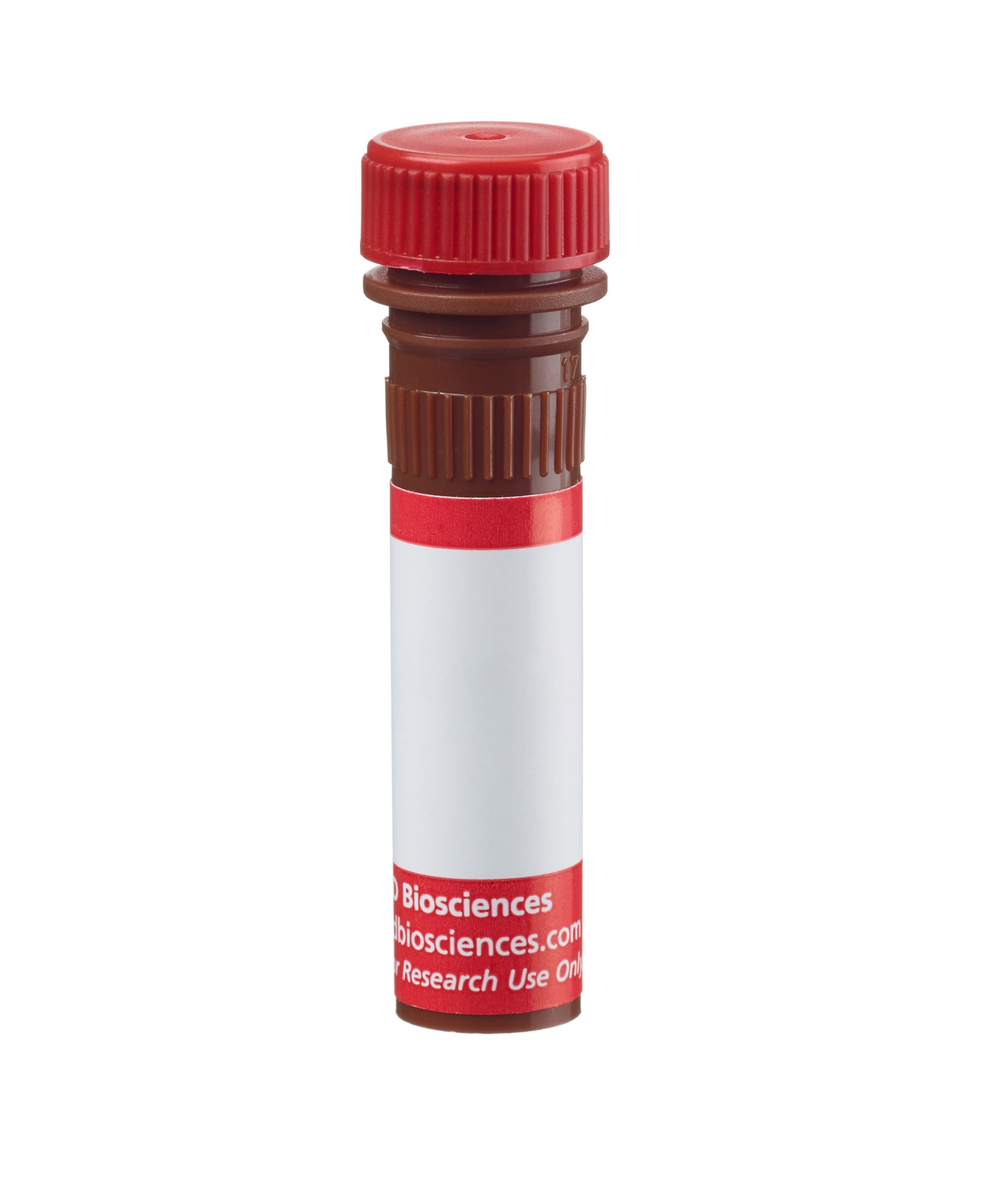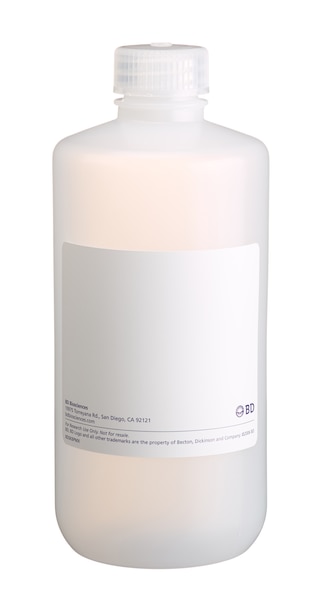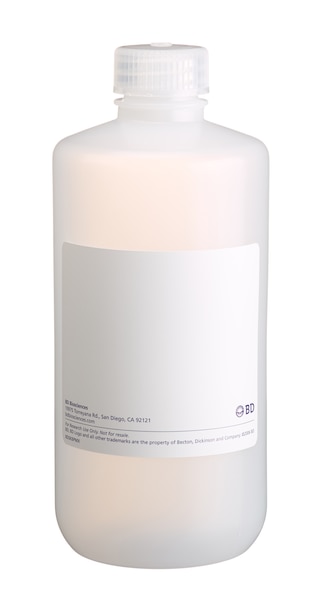Old Browser
This page has been recently translated and is available in French now.
Looks like you're visiting us from {countryName}.
Would you like to stay on the current country site or be switched to your country?
BD Pharmingen™ Alexa Fluor® 647 Mouse Anti-Human Tie2 (CD202b)
Clone 33 (also known as MoAb33; Ab33)
(RUO)



Flow cytometric analysis of Tie2 (CD202b) expression on human Ea.hy926 cells. Cells from the human EA.hy926 endothelium-derived cell line (ATCC CRL-2922) were stained with Alexa Fluor® 647 Mouse IgG1, κ Isotype Control (Cat. No. 565571; dashed line histogram) or Alexa Fluor® 647 Mouse Anti-Human Tie2 (CD202b) antibody (Cat. No. 33455; solid line histogram) at 1 μg/test. The fluorescence histogram showing Tie2 (CD202b) expression (or Ig Isotype control staining) was derived from gated events with the forward and side light-scatter characteristics of viable cells. Flow cytometry and data analysis were performed using a BD LSRFortessa™ X-20 Cell Analyzer System and FlowJo™ software. Data shown on this Technical Data Sheet are not lot specific.


BD Pharmingen™ Alexa Fluor® 647 Mouse Anti-Human Tie2 (CD202b)

Regulatory Status Legend
Any use of products other than the permitted use without the express written authorization of Becton, Dickinson and Company is strictly prohibited.
Preparation And Storage
Product Notices
- Since applications vary, each investigator should titrate the reagent to obtain optimal results.
- An isotype control should be used at the same concentration as the antibody of interest.
- Caution: Sodium azide yields highly toxic hydrazoic acid under acidic conditions. Dilute azide compounds in running water before discarding to avoid accumulation of potentially explosive deposits in plumbing.
- The Alexa Fluor®, Pacific Blue™, and Cascade Blue® dye antibody conjugates in this product are sold under license from Molecular Probes, Inc. for research use only, excluding use in combination with microarrays, or as analyte specific reagents. The Alexa Fluor® dyes (except for Alexa Fluor® 430), Pacific Blue™ dye, and Cascade Blue® dye are covered by pending and issued patents.
- Alexa Fluor® is a registered trademark of Molecular Probes, Inc., Eugene, OR.
- Alexa Fluor® 647 fluorochrome emission is collected at the same instrument settings as for allophycocyanin (APC).
- For fluorochrome spectra and suitable instrument settings, please refer to our Multicolor Flow Cytometry web page at www.bdbiosciences.com/colors.
- Species cross-reactivity detected in product development may not have been confirmed on every format and/or application.
- Please refer to www.bdbiosciences.com/us/s/resources for technical protocols.
Companion Products



The 33 monoclonal antibody specifically recognizes Tunica interna endothelial cell kinase-2 (Tie2) which is also known as CD202b or Angiopoietin-1 receptor. Tie2 (CD202b) is a single-pass type I membrane protein that is encoded by TEK (TEK receptor tyrosine kinase) which belongs to the receptor tyrosine kinase (RTK) family. The extracellular region of Tie2 (CD202b) contains an N-terminal IgC2-like domain followed by three EGF-like domains, an additional IgC2-like domain and three fibronectin type III domains. The intracellular region contains a protein kinase domain. TIE receptors, designated Tie1 and Tie2 (Tek) have a tissue distribution which is limited primarily to cells of endothelial origin. Binding of angiopoietin 1 to Tie2 (CD202b) leads to downstream receptor-mediated signaling that is involved in angiopoiesis and survival of endothelial cells. Tie2 has been shown to be required for the normal development of vascular structures during embryogenesis. It has also been demonstrated to play a role in normal and pathological angiogenesis in adults. Mutations in the TEK gene cause multiple cutaneous and mucosal venous malformations (VMCM). Tie2 has a predicted molecular weight of 126 kD, but may be observable at ~130-165 kDa. This antibody has been reported to recognize human and mouse Tie2 but not Tie1.
Development References (5)
-
Dumont DJ, Gradwohl G, Fong GH, et al. Dominant-negative and targeted null mutations in the endothelial receptor tyrosine kinase, tek, reveal a critical role in vasculogenesis of the embryo. Genes Dev. 1994; 8(16):1897-1909. (Biology). View Reference
-
Jeltsch M, Leppanen VM, Saharinen P, Alitalo K. Receptor tyrosine kinase-mediated angiogenesis. Cold Spring Harb Perspect Biol. 2013; 5(9):a009183. (Biology). View Reference
-
Partanen J, Dumont DJ. Functions of Tie1 and Tie2 receptor tyrosine kinases in vascular development. Curr Top Microbiol Immunol. 1999; 237:159-172. (Biology). View Reference
-
Peters KG, Coogan A, Berry D, et al. Expression of Tie2/Tek in breast tumour vasculature provides a new marker for evaluation of tumour angiogenesis. Br J Cancer. 1998; 77(1):51-56. (Immunogen: ELISA, Immunohistochemistry, Western blot). View Reference
-
Wong AL, Haroon ZA, Werner S, Dewhirst MW, Greenberg CS, Peters KG. Tie2 expression and phosphorylation in angiogenic and quiescent adult tissues. Circ Res. 1997; 81(4):567-574. (Clone-specific: Immunohistochemistry, Western blot). View Reference
Please refer to Support Documents for Quality Certificates
Global - Refer to manufacturer's instructions for use and related User Manuals and Technical data sheets before using this products as described
Comparisons, where applicable, are made against older BD Technology, manual methods or are general performance claims. Comparisons are not made against non-BD technologies, unless otherwise noted.
For Research Use Only. Not for use in diagnostic or therapeutic procedures.
Report a Site Issue
This form is intended to help us improve our website experience. For other support, please visit our Contact Us page.